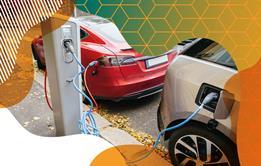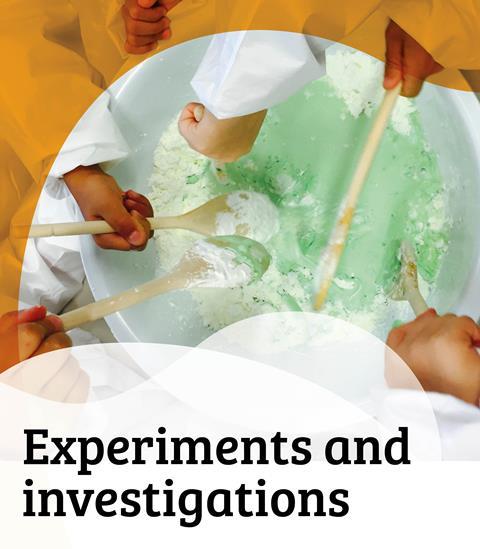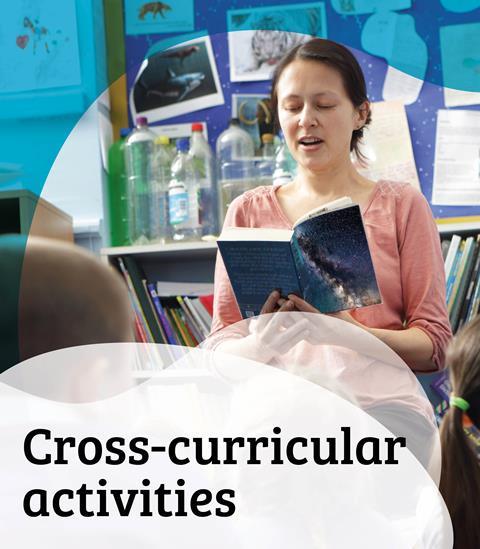Use plastic degradation and clean cooking as contexts for teaching about chemical changes
This resource is also available in Welsh and Irish
Get the Welsh language version.
Get the Irish language version.
Chemical changes produce new materials which may or may not be good for our environment and health. This topic web contains sustainability context ideas and classroom activity suggestions for teaching chemical changes to 9-11 year olds. Explore how plastics degrade and how this contributes to climate change, or how burning fuels on inefficient stoves affects our environment and health.
Each web explains the background science, describes how scientists are working in this field, and suggests ways to explore this in the classroom.
How to use this topic web
This resource is part of our Sustainability contexts for primary science teaching series. The series features a total of 20 topic webs designed to help you link your existing curriculum teaching to sustainability issues.
Find out more about how to use this topic web in your teaching.
-

Download this resource
Get both topic webs on pollutants produced by chemical changes for 9–11 years, with tips and suggested activities to use in the classroom.
Topic web 1: How plastic waste contributes to climate change
What’s the science?
Plastic waste is responsibly disposed of in three ways: landfill, incineration and recycling, but also irresponsibly through littering in landscapes, waterways and oceans. These irresponsible ways pose risks to habitats and wildlife. Sunlight and heat cause plastics to release greenhouse gases as they begin to break down, leading to concerns about microplastics in the environment. Plastic contributes to greenhouse gas emissions at every stage in its lifecycle and the way it is managed as a waste product.
What are scientists doing about it?
Research aims to understand the impact of microplastics. New plastic materials are in development. Scientists are developing bio-derived plastics (from plants) such as latex and biodegradable plastics (that break down in the natural environment) from therubber tree. However, some biodegradable plastics are made from fossil resources and some bio-derived plastics are not biodegradable. Scientists are also researching innovative recycling methods using enzyme degradation of plastics, or organisms such as mealworms which break down plastics and turn them into compost.
How could you explore this in the classroom?
- Introduce the idea that plastics are made largely of hydrocarbons so could break down into carbon and hydrogen. Watch videos about how plastics are made, used, and disposed of. Explore recycling symbols on everyday plastics, and use these to sort products into recyclable and non-recyclable. Review the lifecycles of plastic products, including the years they take to break down. Record the information in a table: type of plastic, uses, properties, recyclable/non-recyclable and lifecycle time. Learners could observe a plastic straw and paper straw in damp earth, making predictions about how these will change.
- Learners can develop predicting, observation, comparative/fair testing and data-handling skills by exploring the time taken for live mealworms to eat plastic. Use two types of plastic: polyethylene (carrier bag) and polystyrene (cup). Cut a small piece of each, place in a tub of mealworms and observe over time.
- Learners will develop mathematical data-handling skills by recording time against weight of mealworms in a table. They could produce bar graphs to present their data. Learners could then write a newspaper or information report. Within DT, to show alternatives to plastic bags they could make a bag from an old T-shirt.
Curriculum links
Reversible and irreversible changes; predicting; observing; fair testing; recording and handling data.
Topic web 2: Clean cooking for all
What’s the science?
Burning fuel is an irreversible change. It is often used in cooking because it releases lots of heat. In the UK we tend to cook by burning gas, or we use electric stoves. But billions of people around the world don’t have access to gas and electricity so instead cook by burning cheaper fuels like charcoal, wood or animal dung on open fires. Cooking like this is inefficient – it burns lots of fuel that releases carbon dioxide. It is also bad for health – the smoke contains particulate matter that damages people’s lungs.
What are scientists doing about it?
Scientists are designing and testing ‘clean’ cooking stoves that use less fuel and produce less smoke than traditional stoves. In their designs, the fuel mixes with enough air to burn cleanly. This means that people will want to use these stoves because they are suitable for the fuel they have and the cooking they do. Scientists are also working to bring sustainable electricity (for example from solar panels) to developing countries so that people can use electric stoves to cook on rather than burning fuel.
How could you explore this in the classroom?
- Watch the clean cooking campaign launch video.
- Get learners to observe the carbon from a candle demonstration to see that burning is an irreversible change and can produce solids if the flame doesn’t get enough oxygen.
- Explore the most efficient way of melting butter in a foil case over a candle. Learners could explore factors such as distance from the flame, size of chunks of the butter and using a foil lid. Time how long it takes to melt, collect this data together and suggest the most efficient ‘stove’ for the butter.
- To take this further, learners could find out what type of hob they use at home (gas, electric/ceramic, or induction) and try melting the same amount of butter at home. Which type of hob is fastest? Does the quickest hob necessarily make it the most environmentally friendly?
- Try out Practical Action’s smoky homes challenge to design your own cook stove or smoke hood.
- Watch videos about researchers testing clean cook stoves and trialling stoves in Laos.
Curriculum links
Habitats; observing over time; materials; researching and presenting findings; literacy; geography; recording and handling data.
Try these additional resources
- Explore more sustainability topic webs to provide context for key topics in primary science, including electricity and materials for 9–11 year olds.
- Read up on the background science for irreversible changes and burning with our That’s Chemistry! chapters.
- Try exciting demonstrations linked to chemical changes.
- Find out more about air pollution in the UK with the Primary Science Teaching Trust’s air pollution research resources.
- Find out more about careers in chemistry such as Florence’s role as chief technology officer working to reduce the world’s reliance on petroleum.
Downloads
Pollutants produced by chemical changes | 9–11 years
PDF, Size 0.11 mb
Additional information
Sources:
- Plastic waste and climate change – what’s the connection | WWF
- Plastics 101 | TKSST
- Climate Change | Kids Against Plastic
- Making plastic from potatoes | YouTube
- Single-use plastics | The Guardian
- Towards more sustainable plastics | RSC
- Project Beacon Case Study | Zero Waste Scotland
- Burning: That’s Chemistry! | RSC
- Household air pollution and health | WHO
Sustainability contexts for primary science

Find out how to teach science curriculum topics through engaging sustainability contexts. Our topic webs include suggestions for classroom activities that develop numeracy, literacy and scientific skills.
- 1
- 2
- 3
- 4
- 5
- 6
- 7
- 8
- 9
- 10
 Currently
reading
Currently
reading
Pollutants produced by chemical changes | 9–11 years



































No comments yet